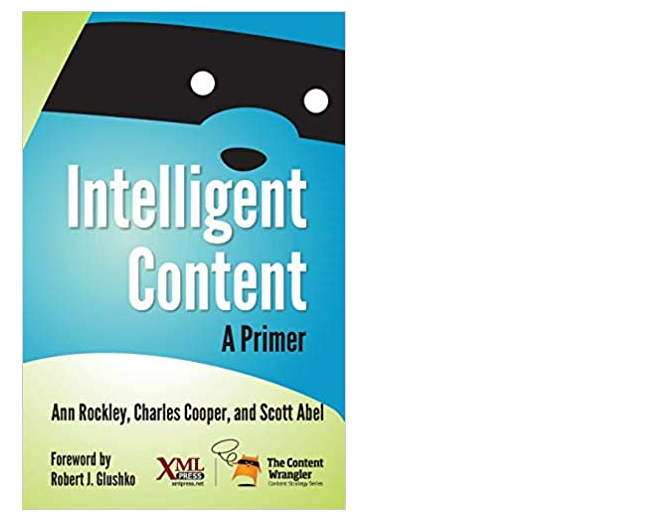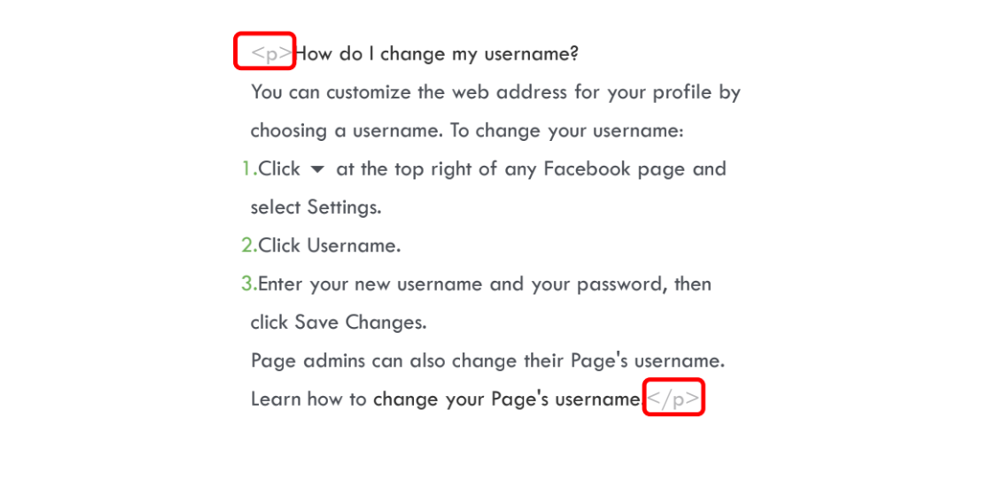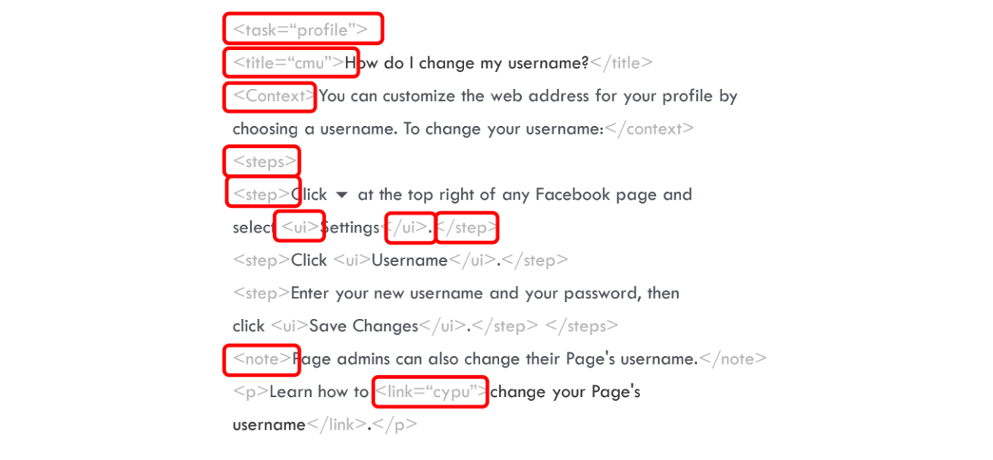The more people involved, the more complicated content creation gets. Especially in big organisations with multiple content creation departments, a content operations strategy is key. In the lecture “Developing Content for Complex Digital Environments”, we learn how to develop content with multiple content genres and outputs in a cohesive whole.
Content requirements in complex environments
Before we start, what are complex environments? Bailie puts it this way: “Complexity is generally used to characterise something with many parts where those parts interact with each other in multiple ways, culminating in a higher order of emergence greater than the sum of its parts.”
And what are complex content environments? When multiple content genres and content types make up a connected content ecosystem with different teams. Such teams often have different schedules and outputs.
For instance, take a company that sells kitchen blenders. The complexity results from the different departments regarding content such as marketing, in-product copy, user guidance, UI strings, chatbot, social media, technical content, and knowledge base. Each of these teams has different responsibilities, outputs, and timelines, but one way or another, they are dependent on each other.
There are three life cycles to consider:
- The external customer life cycle with multichannel publishing, omnichannel delivery, and personalisation - the phase of the journey that customers are in.
- The internal product life cycle with efficient use of content assets, automate delivery, consistency across silos, and production efficiencies - the phase of the product cycle that the company is in.
- The content life cycle with the phase of production that content is in.
Developing content for these environments means that you synchronise the work of all teams to form a cohesive corpus.
Reasons for content optimization in complex environments
The objective is to deliver content from the right sources, on the right platforms, to the right audience, at the right moments, through the right channels, in the right formats/versions/languages, in the right media, and in the right context. You also want to do this efficiently and minimise pain points for the people who work on it and your customers.
If you don't have a content production system with professional writers, and content is written by developers or designers, then content most likely won't be fit-for-purpose. If the style guide is in a static PDF format or there is none, there is a high risk of chaos and inconsistency. There will be a lot of copy-pasting things from one place to another, which makes it unsynchronised sooner or later. To learn how to develop content for complex digital environments solves all of these problems.
What intelligent content looks like
We want content that is discoverable, reusable, reconfigurable, and adaptable. This applies when the content is structurally rich and semantically categorised; that is what gives content its intelligence. This intelligence means that the content can be understood by machines and thereby significantly improve customer experience.
Structurally rich content is organised in a way machines can process it. Semantically categorised content contains metadata that gives meaning to the information. This way, content can be processed more specifically, and ultimately creating a better customer experience.
| Characteristic of intelligent content | Description | Example |
| Discoverable | Search engines can find your content because it understands the essence of your meaning, not just the words. | Search for “wine bar”. Places to drink wine will be displayed. But if you click on the “Shopping” tab, you will see wine cabinets you can buy. |
| Reusable | A particular piece of content is created only once and re-used many times across multiple information products or even within the same piece of information. | Content that can be reused in multiple places, e.g. compliance statements, product names, or other common content. |
| Reconfigurable | The content can change its look and feel automatically because the formatting is separate from the content itself. | All the categories on a shoe-shopping site that show the same pair of red-heeled boots. |
| Adaptable | The content can be aggregated in multiple ways without manual intervention to meet a new need. | The difference between the amount of content shown in LinkedIn articles on your phone and desktop. |
Read more on intelligent content in this book:

Metadata on the Web: Basic structure vs. structure + semantics
As you have read above: semantics plus structure make intelligent content. Semantics is language and logic that refers to meaning. When applied to content, it is often framed by the Semantic Web. Semantic content has metadata attached to it. It is essential because software systems can read and understand metadata. Using software can process content more accurately, personalised, and anticipated - in one word: better.
Metadata is vocabulary that gives the content more meaning during processing by software systems. Metadata, transcoding, and microformats all fall under the umbrella term standard markup, a common markup language that all internet browsers can understand. Transcoding translates files from one format to another, and microformats are recognized formats that help categorise content for search and retrieval.
While <H1> has little meaning to a computer, <productListing title=”ProductName”> offers much more meaning. The following example uses a simplified markup to show how the basic structure of a piece of content compares to the same content but is structured with rich semantics.
Example 1 - Basic structure:

Example 2 - Structure + semantics:

In example 1, the information the computer receives is limited to the fact that what is written is a copy through the <p>...</p> tags at the beginning and the end. Whereas in example 2, the computer is given much more context because, in each line, the meaning is translated to it with the help of descriptive tags (<task=”profile”>, <steps>, <note>, <link=”cypu”>,...).
Good content has to be relevant, accurate, informative, timely, engaging and based on standards such as accessibility. But in a technical context, it also has to be structured with rich semantics, well-formed, interoperable, predictable, extensible and standards-based (schemas, metadata or storage standards).
Turner (2014) makes an interesting case about solving the problem with the help of semantics that every metadata item needs to have all the attributes tagged in the record. The key lies between the data and their relationship to one another using ontologies. They are independent of the data; therefore you can easily change and add items or categories without relabeling the entire database. All data can be linked to the metadata via categories using semantic links, eliminating the need to tag each item in the metadata itself.
Full potential with structured content + semantics
Many benefits come with structured content paired with semantics:
- Supports omnichannel marketing (segment by audience, stage in the user journey, and product)
- Supports multichannel publishing (output by device and medium)
- Supports complex delivery systems (e.g. for environments that include chatbots, augmented reality, virtual reality, Internet of Things)
- Increases operational efficiency (format and style-free, cross-channel delivery, single source: Create one and re-use multiple times, and add metadata effortlessly)
A coherent content creation system also helps organisations to increase return on investment (ROI) for their content:
- Supports innovation in an organisation
- Enforces consistency in brand experience on all channels and customer touchpoints
- Reduces administrative overhead as corrections, changes or adjustments to content need to be made only once and not separately in each place where the content is displayed (single fix)
- Facilitates operations as content is reusable, adaptable and reconfigurable
- Can reprioritize efforts in other area
User experience and brand experience improve by viewing individual pieces of content not as such but as part of a larger whole, resulting in consistency across the board. A coherent content creation system doesn't only streamline operations by making content teams collaborate efficiently but also optimises content creation for authors by providing repeatable processes, lowering risks, and automating continuous delivery pipelines.
Editorial principles for better content
There are four core editorial practices you can use to optimise your content. It is up to you to combine the best and most appropriate methods for your situation.
Plain language does not mean dumbing the content down
Think of an upside-down T. Then put a triangle on top of it. In your mind, does it look like this?

Probably not, and that is ok. Because words can be interpreted differently in a single language. Interpretations across cultures can be even trickier.
There is a myth about plain language. Trying to impress readers with an academic tone, complex sentences, and turgid terminology leads to the opposite. It negatively affects the readability and credibility of your content. (Loranger, 2017)
“Plain English is clear, straightforward expression, using only as many words as are necessary. It is a language that avoids obscurity, inflated vocabulary and convoluted sentence construction. It is not baby talk, nor is it a simplified version of the English language. Writers of plain English let their audience concentrate on the message instead of being distracted by complicated language. They make sure that their audience understands the message easily.”
Here are dos and don'ts on how to use plain language.
Do:
- Use an active voice that makes the meaning clearer
- Keep it simple
- Use first-person and informal address
- Compose short sentences with simple structures
- Limit sentences to a single concept
- Use common and fewer words when possible
- Keep your message brief and focused
Don’t:
- Focusing on irrelevant details
- Using generic headings
- Dumbing down the message
- Using non-familiar conventions
- Breaking one concept into several sentences
- Making two short sentences into one long sentence
Keeping content short and simple helps readers to understand it quicker and better. Using plain language will make your content more enjoyable for readers and less likely to be skipped.
Global readiness: Make your content ready for the world
Global readiness is content that works for native and non-native readers and speakers. It can be translated with minimal human intervention and is a process for producing an alternate language that follows guidelines to ensure a quality outcome with efficiency.
Translation for global markets
Translation is the process of translating words or text from one language into another. Sound writing guidelines make translating copy easier, reduce costs and the cognitive load for readers. That includes copywriting, taxonomy, images, infographics and so on. Be aware of cultural sensitivities with images. Good writing guidelines are based on the principles for plain language explained above. In addition to them, there are a few things to consider: define new or ambiguous terms, support user behaviour by using standard publishing conventions and put links at the end, not in-line. Avoid jargon, idiom, and other culturally-specific terms.
Tip: Languages have different lengths. The text length can change after translating it from one language to another.
Adapt to the location: Localisation of content
Localisation is adapting a product or content to a specific territory or market, such as limiting it to a particular location.
Depending on the country and culture, there are many things to consider in your localisation process. For example, while most European nations use the calendar format DD-MM-YYYY, the US uses MM-DD-YYYY. Western cultures read in an F-shapes pattern. People there read from left to right and scan mostly the left side of the page. But that is the opposite in Arabic countries, where they read right to the left. (Rozwens, 2014)
One method for localisation is transcreation. It is the process of adapting a message from one language to another while maintaining its intent, style, tone, and context. The translated text should arouse the same emotions and implications as the text in the source language. (Tamehi, 2017)
Using controlled natural language to reduce complexity
Controlled natural language creates vocabulary control for consistency. This becomes visible in grammatical constructions, word use and presenting content. Its principles include a dictionary of acceptable words to use. For example, consistent product terminology: Calling the blender always blender and not mixer, no matter whether on social media, in-product or in a brochure.
Another principle would be one word, one meaning, and one-word form (e.g. wood and not piece of a tree). It is about reducing complexity by eliminating pronouns and using the simplest term possible.
Making your content accessible to everybody
Accessibility does not just help people who use adaptive technology, such as screen readers, to consume content; it is also the law in many countries to meet accessibility guidelines. It demonstrates caring for customers and improves SEO. Areas in which accessibility issues are handled are the Web CMS, front-end technology and the authors.
“Content is just as much a part of the product as anything else.” (Rockley et al., 2015)
Where to go from here #
Setting up a strategy for content with complex digital requirements ensures that, in the end, a larger whole emerges from a multitude of parts; that’s the core competence we learned. We go deeper into writing for the web and the Semantic Web in another course in the second semester called “Writing, Editing & Curating”, as it is an important part of content strategy.
The book “Intelligent Content” by Rockley, A., Cooper, C., & Abel, S. is a reading recommendation to learn more about optimised digital content.
References #
Turner, M. (2014, August 20). Making the Case for Semantic Metadata. MarkLogic. https://www.marklogic.com/blog/making-case-semantic-metadata/
Loranger, H. (2017, October 8). Plain Language Is for Everyone, Even Experts. Nielsen Norman Group. https://www.nngroup.com/articles/plain-language-experts/
Rozwens, J. (2014, December 3). How To Conduct Website Localization: Don’t Get Lost In Translation. Smashing Magazine. https://www.smashingmagazine.com/2014/12/how-to-conduct-website-localization/
Rockley, A., Cooper, C., & Abel, S. (2015). Intelligent Content: A Primer. XML Press.
Tamehi, A. (2017, June 12). The Complete Guide to Transcreation. Translator Thoughts. https://TranslatorThoughts.com/2017/06/the-complete-guide-to-transcreation/
This article is a student-written report about the course "Developing Content for Complex Digital Environments" in the 2nd semester of the M.A. program in content strategy. It has been authorized by the instructor Rahel Anne Bailie.
This article was updated by Anna-Maria Aichholzer, Freya Essler and Dora Kramser.

